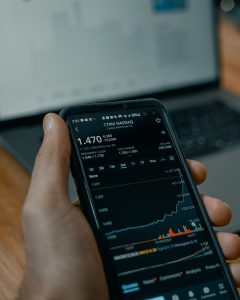Forex trading is a popular and lucrative venture that involves buying and selling currencies in a bid to make a profit. Traders use leverage to magnify their potential gains, but this also increases the risk of losing money. To manage this risk, traders need to calculate their margin, which is the amount of money required to open and maintain a trading position. In this article, we will explain how to calculate your margin for forex.
What is Margin in Forex?
Margin is the amount of money required to open and maintain a trading position. It is a form of collateral that traders must put up to cover any potential losses. Margin is calculated as a percentage of the total value of the trade, and it varies depending on the leverage used.
For example, if a trader wants to open a position worth $10,000 with a leverage of 100:1, they would need to put up $100 in margin. This means that if the trade goes against them and they lose the entire $10,000, their loss would be limited to the $100 in margin that they put up.
Margin is usually expressed as a percentage of the total value of the trade. The margin requirement varies from broker to broker and can range from 1% to 10% or more, depending on the currency pair and the leverage used.
How to Calculate Margin
To calculate your margin, you need to know the following information:
1. The currency pair you want to trade.
2. The size of the trade (in lots).
3. The leverage offered by your broker.
4. The current exchange rate for the currency pair.
Once you have this information, you can use the following formula to calculate your margin:
Margin = (Lot Size x Contract Size x Price) / Leverage
Let’s break down this formula:
1. Lot Size: A lot is a standardized unit of measurement used in forex trading. The standard lot size is 100,000 units of the base currency. However, some brokers offer smaller lot sizes, such as micro lots (1,000 units) or mini lots (10,000 units).
2. Contract Size: The contract size is the number of units of the base currency in a lot. For example, if you are trading the EUR/USD pair, the contract size would be 100,000 euros.
3. Price: The price is the current exchange rate for the currency pair. For example, if the EUR/USD pair is trading at 1.2000, the price would be 1.2000 USD per euro.
4. Leverage: Leverage is the amount of money your broker is willing to lend you for trading. For example, if your broker offers a leverage of 100:1, this means they will lend you $100 for every $1 you put up in margin.
Let’s look at an example to see how this formula works in practice:
Suppose you want to trade the EUR/USD pair with a standard lot size of 1.0 and a leverage of 100:1. The current exchange rate is 1.2000. Using the formula above, we can calculate the margin required as follows:
Margin = (1.0 x 100,000 x 1.2000) / 100 = $1,200
This means that you would need to put up $1,200 in margin to open and maintain a position of 1.0 lots in the EUR/USD pair with a leverage of 100:1.
Managing Margin in Forex
Margin is a critical aspect of forex trading, and traders need to manage it carefully to avoid incurring losses. Here are some tips to help you manage your margin effectively:
1. Use a stop-loss order: A stop-loss order is an order that automatically closes your position if the price reaches a certain level. This can help limit your losses and prevent your account from going into negative territory.
2. Monitor your account regularly: Keep a close eye on your account and monitor your margin level. If your margin level falls below a certain threshold (usually 100%), your broker may close your position to prevent further losses.
3. Avoid over-leveraging: Using high leverage can magnify your potential gains, but it also increases the risk of losing money. Avoid over-leveraging and use leverage sparingly.
4. Have a trading plan: Develop a solid trading plan and stick to it. This can help you avoid impulsive trades and make more informed decisions.
Conclusion
Margin is a crucial aspect of forex trading, and traders need to calculate it carefully to manage their risk effectively. By understanding how to calculate your margin, you can make more informed trading decisions and avoid unnecessary losses. Remember to monitor your account regularly, use stop-loss orders, and avoid over-leveraging to manage your margin effectively.





